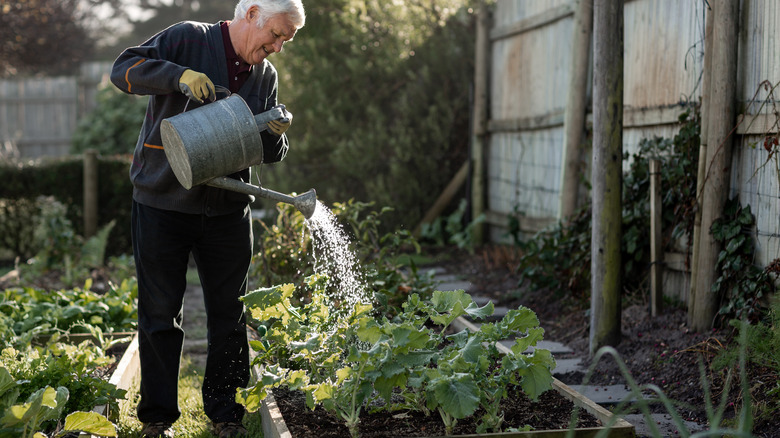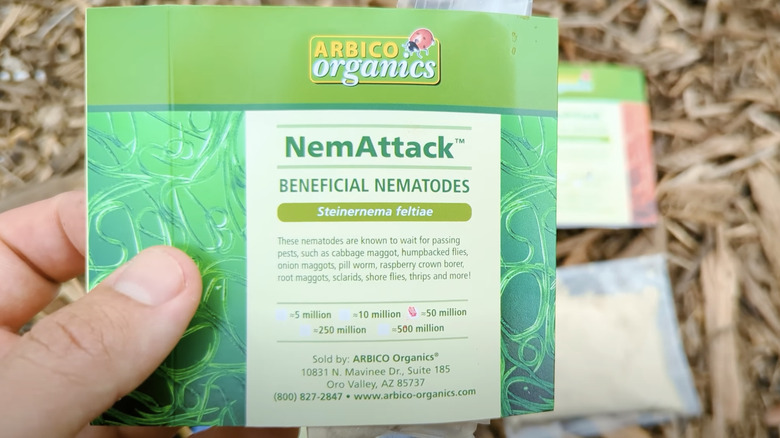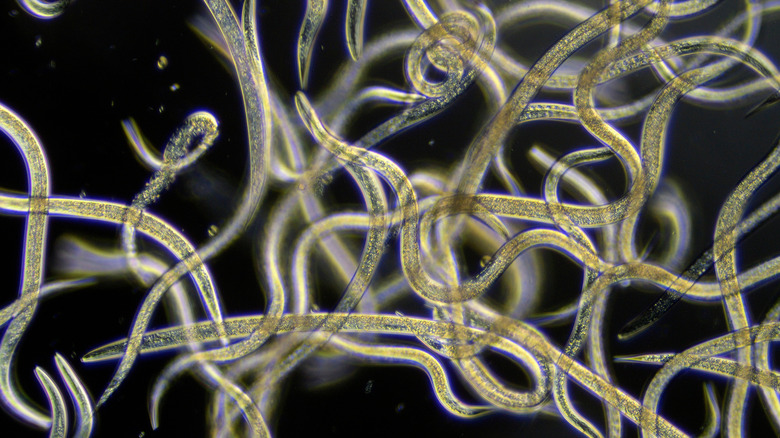Why Releasing Nematodes Into Your Garden May Not Be A Bad Idea After All
We may receive a commission on purchases made from links.
While there are nematodes that will damage the plants in your garden, dozens of species are a great option for natural pest control. Nematodes that come from the Steinernematidae and Heterorhabditidae families are known to be beneficial to gardeners. Not only do these roundworms feed on pests before they're old enough to attack your plants, but they won't hurt humans, animals, or other beneficial insects, such as earthworms. If you're thinking about releasing nematodes in your garden to fight off a certain pest, you'll want to look for species that specifically eat the insect you wish to eradicate, as different species feed on various hosts.
Helpful nematodes are known to kill thrips, caterpillars, cutworms, grubs, beetles, fungus gnats, crown borers, and other nematodes that attack the roots of plants. They will also help to aerate the soil and produce organic material that improves plant health. These microscopic creatures can be purchased from Walmart, Amazon, and other online retailers.
How to use nematodes in your garden
Nematodes live in the soil of your garden, so they are not effective against insects that remain above ground. They will, however, eat the larvae of these pests that have not yet emerged from the soil, stopping them before they get a chance to munch on your plants. For nematodes to be effective pest control, it's a good idea to introduce them before your vegetables are in danger. Adding these beneficial worms to your garden near the end of summer or the beginning of fall will get rid of bugs looking to hide in the ground during winter. If you have issues with Japanese beetles, nematodes will be the most helpful if introduced at the end of spring.
While it's important to bring these worms into your growing space during the right time of the season, you'll also need to introduce them during the right conditions. Nematodes will die if exposed to direct sunlight, so it's best to let them go on a cloudy day or in the late evening. Moisture is also important for nematodes starting out in a new home, and misting your soil before and after releasing them is helpful. These worms do best if they're released when soil temperatures range from 55 to 90 degrees Fahrenheit. Nematodes are often combined with water and then poured or sprayed over the garden.
How nematodes control pests
You may be wondering how these tiny creatures make such an impact on garden pests, and it's because they're parasitic. Beneficial nematodes will find a way inside their host and paralyze them. They do this by releasing a harmful bacteria, known as Xenorhabdus, that the pests cannot fight against. After 24 to 48 hours, the host will die, and the nematodes will eat it, starting from the inside.
When the nematodes have had their fill, they will lay their eggs, leaving the remainder of the host's body as food for their young. They will keep moving on to new hosts to have a consistent source of food, eliminating the insects one by one. Introducing beneficial nematodes to your garden is a great form of natural pest control, but you may need to add more each growing season for continued protection. Though tiny parasitic worms might sound like bad news, releasing beneficial nematodes into your garden is a good idea if you're having problems with pesky insects.


